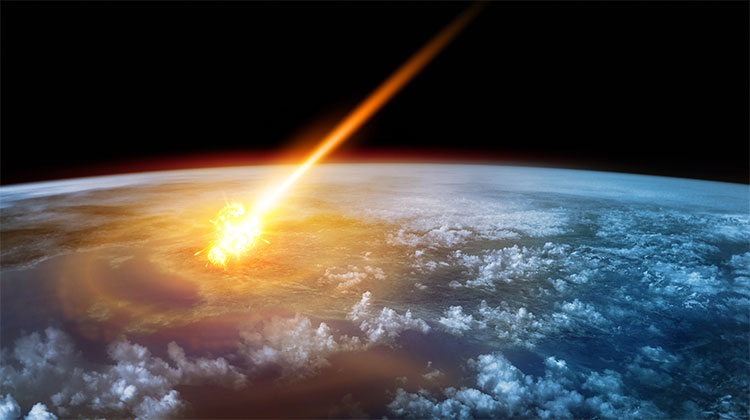The celestial explosion is the culprit that destroyed the ancient Near East civilization
According to a report presented at the American Schools of Oriental Research annual meeting, scientists gathered evidence that 3,700 years ago, an explosion of a celestial body in the atmosphere destroyed settlements in modern Jordanian territory. Everything is destroyed within a 25km radius. People only return to settle in these places after 6 or 7 centuries.

The explosion destroyed settlements in modern Jordanian territory.
Excavations in the Central Gur region north of the Dead Sea in Jordan's territory indicate that a Bronze Age civilization existed for at least 2,500 years, until abruptly disappeared 3,700 years ago. It is estimated that between 40,000 and 65,000 people have lived in a relatively narrow area.
Researchers have conducted dating of radioactive carbon and analyzed the minerals found in the area. Data show that 3,700 years ago a catastrophic event occurred, resulting in 5 relatively large settlements and over 100 small settlements destroyed and killed all local residents.
The rest of the ruins provide a comprehensive view. Radiocarbon analysis shows that almost all of the walls of clay brick buildings almost immediately disappear, only the remains of stone remain. Additional evidence of an ancient disaster turned out to be a trace of glass on the outer surface of many ceramic pieces of this period. Studying these fragments shows the presence of zircon crystals (ZrSiO 4 ) formed within 1 second at a hot temperature of thousands of degrees.
The authors of the study believe that strong winds accompanied by disasters have covered settlements with tiny mineral particles. Scientists compared this cosmic event with that in Siberia in 1908. At that time, because the inhabitants were too sparse in Siberia, it was unclear how human damage was, but the waves caused by the explosion caused the forest to fall. on an area of 2,000 km 2 .
- Life on Mars may have disappeared due to a nuclear explosion
- Civilizations of aliens?
- Ancient civilizations were forgotten
- Mysterious ancient civilizations unknown
- Comets started agricultural civilization
- The mystery of the first ancient civilization
- Ever had a civilization in Antarctica?
- Discovered ancient civilization never known in India
- Old satellites discovered thousands of ancient monuments
- Redefining the age of Indian civilization
- Decipher the collapse of the first ancient civilization
- Moon is the culprit of disaster?
 Discovered an ancient centipede fossil 99 million years old
Discovered an ancient centipede fossil 99 million years old Discovered bat-like dinosaurs in China
Discovered bat-like dinosaurs in China Discovered a 200-year-old bronze cannon of the coast
Discovered a 200-year-old bronze cannon of the coast Discover 305 million-year-old spider fossils
Discover 305 million-year-old spider fossils